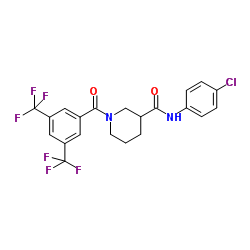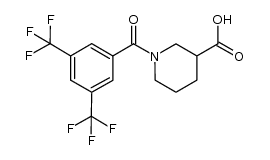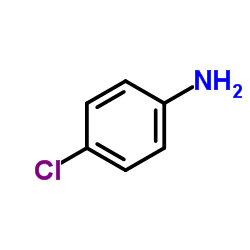| In Vitro |
CCG-100602 (3-30 μM) decreases the number of adherent hASC cells[2]. CCG-100602 blocks the expression of MRTF-A/SRF-activated genes[2]. CCG-100602 (5-40 μM) diminishes the TGF-β1 (5 ng/mL)-induced increase in COL1A1, FN1, and ACTA2 transcription in a dose-dependent manner[1]. CCG-100602 (5-40 μM) reduces the TGF-β1-induced increase in MRTFA and SRF mRNA expression in the HIMFs in a dose-dependent manner [1]. CCG-100602 (5-40 μM) significantly reduces the protein expression levels of the ECM and α-SMA in TGF-β1 (5 ng/mL)-stimulated cells in a dose-dependent manner[1]. CCG-100602 (5-40 μM) also significantly represses the MRTF-A and SRF protein expression, which were induced by TGF-β1, in the nuclear fraction of the HIMFs in a dose-responsive manner[1]. Cell Viability Assay[2] Cell Line: Human adipose stem cell (hASC) Concentration: 3, 8, 15, or 30 μM Incubation Time: 7 days Result: The number of adherent cells decreased as a response to increasing inhibitor amount. The effect was also dependent on the culture media because the osteogenic medium condition supported the viability over basic culture medium and adipogenic medium conditions. RT-PCR[1] Cell Line: Human intestinal myofibroblasts (HIMFs) Concentration: 5, 10, 20, and 40 μM Incubation Time: 30 min prior to the addition of TGF-β1 (5 ng/mL) for 24 hours Result: Diminished the TGF-β1-induced increase in COL1A1, FN1, and ACTA2 transcription in a dose-dependent manner. Reduced the TGF-β1-induced increase in MRTFA and SRF mRNA expression in the HIMFs in a dose-dependent manner. Western Blot Analysis[1] Cell Line: Human intestinal myofibroblasts (HIMFs) Concentration: 5, 10, 20, and 40 μM Incubation Time: 30 min prior to the addition of TGF-β1 (5 ng/mL) for 48 hours Result: The protein expression levels of the ECM and α-SMA in TGF-β1-stimulated cells are significantly reduced. Repressed the MRTF-A and serum response factor (SRF) protein expression, which were induced by TGF-β1, in the nuclear fraction of the HIMFs.
|


